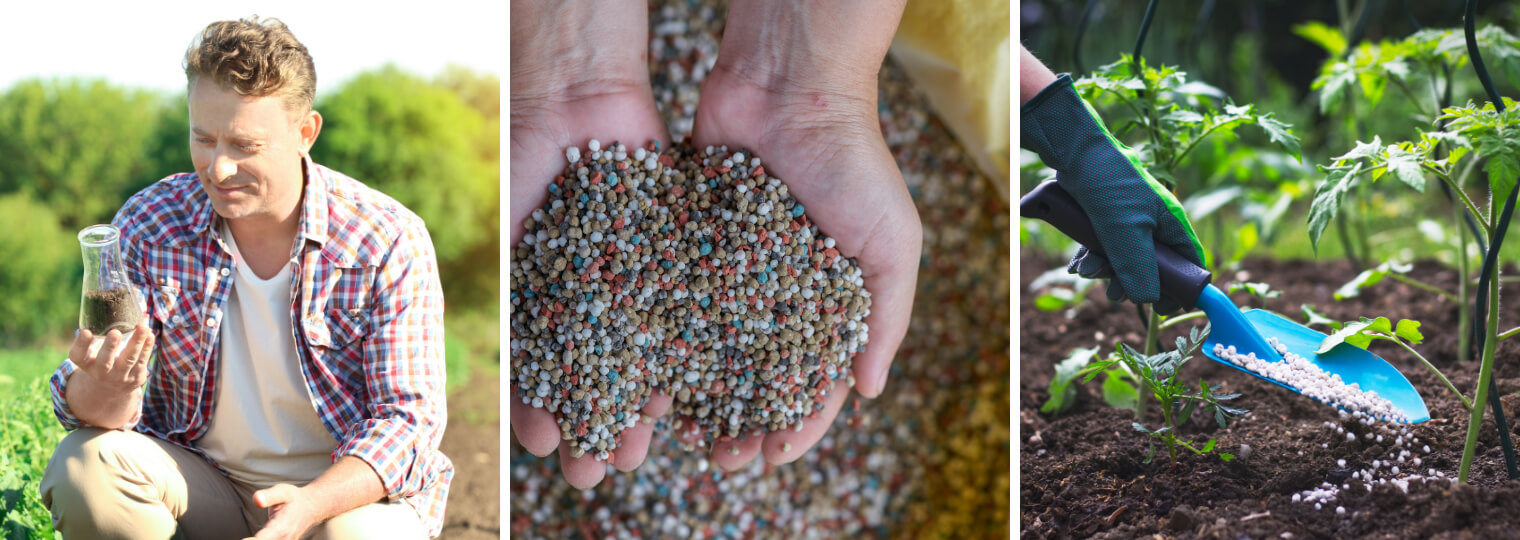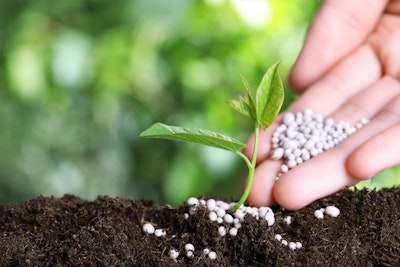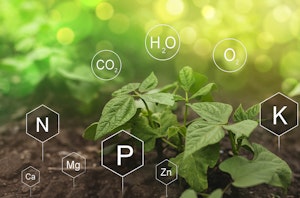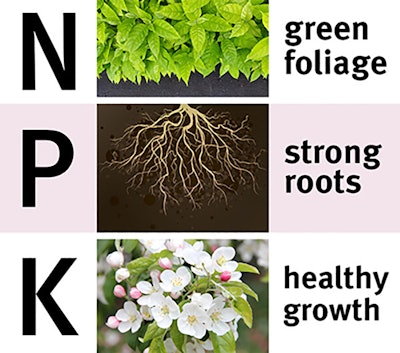 Back to the Be Inspired Blog
Back to the Be Inspired Blog

How to Interpret Fertilizer Labels: No Degree Required
Fertilizer labels can be intimidating. They are standardized by a code of numbers that are supposed to tell you the percentages of nutrients in them. These nutrients, known as NPK (nitrogen, phosphorus and potassium), are essential for plants to grow, but different plants need these nutrients at different levels. Additionally, different soils need varying amounts of the three elements, based on their composition and landscape history. Fortunately, you don’t have to be a biochemist or soil scientist to settle on the right fertilizer for your garden.
4 Steps for Decoding and Using NPK Levels on Fertilizer Labels
Determining which NPK mix to use can be a challenge, but with the 4 tips below the process should be much simpler.
1. Learn how to calculate how many pounds of each nutrient are in the product.

Let’s say you have a 20-pound bag of product with a fertilizer label with the NPK code of 5-10-5 listed on it. Firstly, this means that the percentages of nitrogen, phosphorus and potassium are 5 percent, 10 percent and 5 percent, respectively. Secondly, you have all the information you need to determine exactly what nutrient amounts are in the bag. According to the North Carolina of Agriculture and Consumer Services, it involves a simple set of calculations.
For instance, the N, or first, number is converted from 5 to 0.05. Then it is multiplied by the number of pounds in the bag - 20. Since 0.05 x 20 = 1, your bag of fertilizer contains one pound of nitrogen. If you follow the same steps with phosphorus and potassium, you’ll find that the bag also contains two pounds of phosphorus and one pound of potassium. The remaining 16 pounds are filler - usually made up of sand or limestone.
2. Use a home testing kit to understand how you should amend your soil.

Purchase a soil-testing kit that allows you to compare levels of nitrogen, phosphorus and potassium as well as acidity versus alkalinity. Fine Gardening recommends randomly sampling the soil from different parts of your planting area, taking each sample from up to six inches below the surface. Knowing the average NPK levels as well as pH (or acidity/alkalinity) of your soil allows you to understand roughly how rich or poor the planting area is as well as how readily plants will be able to absorb each nutrient in that area. After you have your results you can move on to determining what fertilizer label details to look for.
3. Look up the nutritional needs of your plants.

Nutritional requirements vary widely from plant to plant as well as their ideal pH ranges for optimal nutrient uptake in soil. For example, peppers thrive in a soil with equal NPK levels, according to SF Gate. Also, most plants require soil with a pH range of 6.3-6.8 to absorb phosphorus, according to Nutrient Stewardship. Since peppers prefer acidic environments, a soil with a pH range of 6.3-6.5 treated with a 20-20-20 fertilizer would be ideal for healthy, productive pepper plants. If soil is more acidic or alkaline, a fertilizer with higher phosphorus levels may be necessary.
4. Assess how the fertilizer label description suits the needs of your plants and soil before purchase.
What do you intend to plant? How much amendment would your soil need in order to support it? Ask yourself questions like these before looking at fertilizer options. Create ballpark NPK figures of what nutrient ratios you think would be best for your yard and your plants. Purchase fertilizers that match your estimates most closely and remember to follow the provided instructions carefully.
Ask The Experts At SummerWinds
Wondering how to interpret fertilizer labels, soil tests, or what percent-concentration of NPK fertilizer is right for your yard? Consult with experienced professionals by stopping in at any one of our convenient locations. One of our gardening experts will happily advise you.

